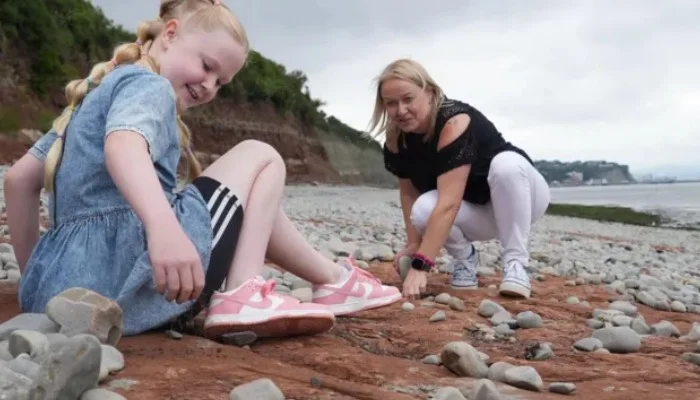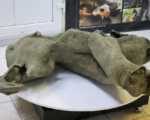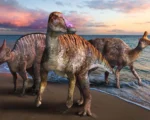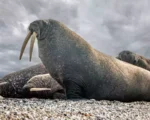Tegan, 10, Makes a 200-Million-Year-Old Discovery During a Casual Walk on a Welsh Beach
10-Year-Old Makes a Rare Prehistoric Find in Wales
During what seemed like an ordinary walk on a South Wales beach, 10-year-old Tegan made a discovery that would captivate paleontologists and dinosaur enthusiasts alike. While strolling along Lavernock Point in the Vale of Glamorgan, Tegan noticed a series of large footprints embedded in the rocky shoreline. These imprints, later confirmed to be over 200 million years old, are believed to have been left by a Camelotia, a plant-eating dinosaur that roamed the Earth during the late Triassic period.
The Discovery Unfolds
Accompanied by her mother, Claire, Tegan was exploring the prehistoric-rich coastline when she spotted five distinct footprints. The footprints varied in size, with some reaching up to 10 inches in length. Sensing that these might be more than just unusual rock formations, Claire photographed the prints and reached out to experts at the National Museum Wales for further evaluation.
Expert Verification and Analysis
Cindy Howells, the curator of paleontology at the National Museum Wales, responded to the family’s inquiry and was immediately struck by the significance of the find. Upon reviewing the images, Howells confirmed that the footprints were indeed those of a large sauropodomorph dinosaur, a distant relative of the more familiar Brontosaurus. The spacing and depth of the prints suggested that the dinosaur was walking along what was once a muddy shore, leaving a rare snapshot of prehistoric life.

The Impact of Tegan’s Find
This discovery is a notable addition to the growing body of paleontological evidence from the region. Wales, particularly the Vale of Glamorgan, has been a rich site for dinosaur discoveries in recent years. Notably, in 2014, Dracoraptor hanigani, a new species of carnivorous dinosaur, was unearthed in the area. Tegan’s discovery of Camelotia footprints further underscores the diversity of dinosaurs that once inhabited this part of the world, suggesting a more complex ecosystem than previously thought.
A Unique Educational Opportunity
For Tegan, this remarkable find has turned into a thrilling educational experience. She has been lauded by paleontologists and has had the unique opportunity to learn directly from experts about the significance of her discovery. The young explorer has also inspired other children to look closer at the natural world around them, proving that scientific discoveries can happen when least expected.
Adding to Our Understanding of Dinosaur Behavior
Beyond its local significance, the discovery of these footprints offers valuable data for scientists studying dinosaur behavior and movement patterns. The consistent stride length and foot placement of the tracks provide clues about the gait and speed of the dinosaur. Such insights can help paleontologists build more accurate models of how these ancient creatures lived, moved, and interacted with their environments millions of years ago.


















